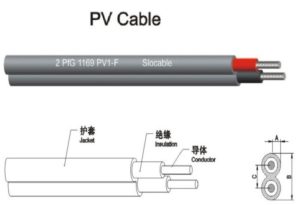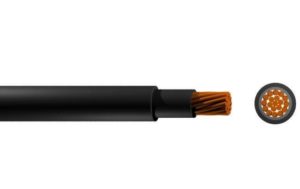The characteristic of photovoltaic cable is determined by its special insulating material and sheath material, which is called cross-linked PE. After irradiation by the irradiation accelerator, the molecular structure of the cable material will change, thus providing its performance in all aspects.

Photovoltaic cables are often exposed to sunlight, and solar systems are often used under harsh environmental conditions, such as high temperatures and ultraviolet radiation. In Europe, sunny days will result in solar system site temperatures of up to 100°C. At present, we can use all kinds of material with PVC, rubber, TPE and cross-linked with high quality material, but unfortunately, the rated temperature of 90 ° C rubber cable, and even the temperature of 70 ° C rated PVC cable is also often used outdoors, the national golden sun project horse, there are many contractors in order to save costs, not to choose cable specially used for solar system, choosing instead to replace the ordinary PVC cable photovoltaic cable, obviously, this will greatly affect the service life of the system.
The characteristic of photovoltaic cable is determined by its special insulating material and sheath material, which is called cross-linked PE. After irradiation by the irradiation accelerator, the molecular structure of the cable material will change, thus providing its performance in all aspects.

Mechanical load resistance:
In fact, during installation and maintenance, cables may be wired along sharp edges of the roof structure and subjected to pressure, bending, tension, cross-tensile loads and strong shocks. If the cable sheath is not strong enough, the insulation layer of the cable will be seriously damaged, which will affect the service life of the whole cable, or lead to problems such as short circuit, fire and personal injury risk.
